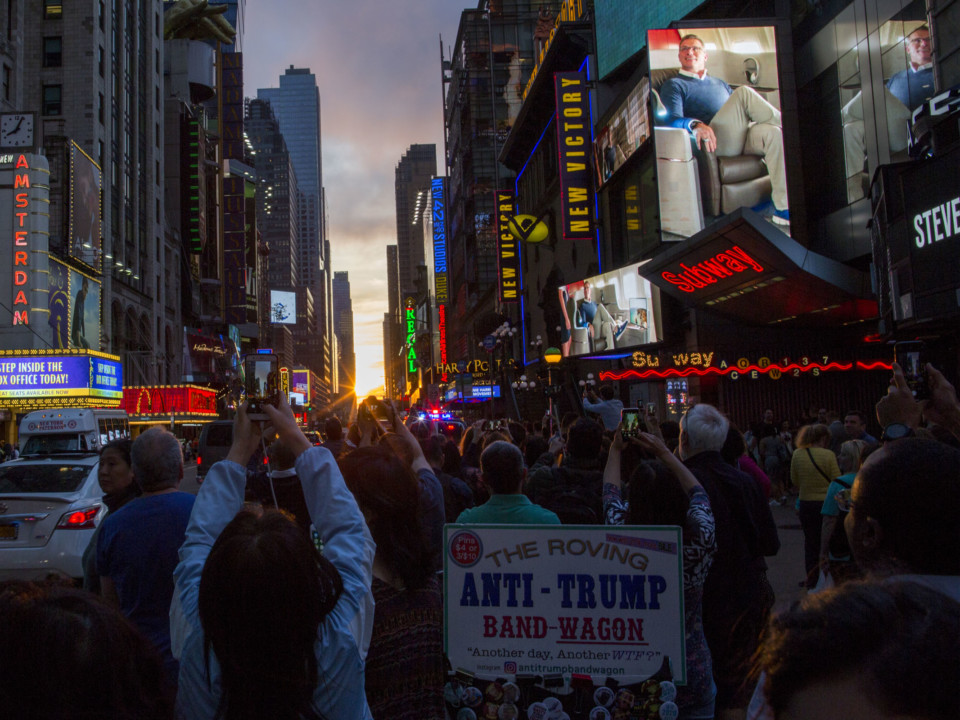A unique natural phenomenon takes place in an even more unique city. In New York City, “Manhattanhenge” refers to the alignment of the sunset (summer) or sunrise (winter) with the Manhattan street grid. On four days every year, the sun appears in between skyscrapers lining the East-West division of the city.
Astrophysicist Neil deGrasse Tyson popularized the name, “Manhattanhenge,” which compares the event to the ancient structure, Stonehenge in southern England. Like Stonehenge, the Manhattan street grid is positioned well to create unique solar alignments on those dates close to the winter and summer solstices.
The two solstices, winter and summer, are the days when the sun travels its most southerly and northerly paths, respectively, through the sky. The winter solstice, on December 21 or 22, corresponds with the shortest day of the year, while the summer solstice, June 21 or 22, marks the longest day of the year.
In the winter, the sun rises to create this effect on dates within the winter solstice. Alternatively, the sun sets and produces a similar spectacle on dates landing within the summer solstice.
This year, consecutive nights offered two slightly different sunset viewings. On Tuesday, May 29, at 8:13 PM, half of the disk glowed above the horizon. Then, on Wednesday, May 30, the whole sun could be seen above the grid, and just a minute sooner, at 8:12 PM. The next “Manhattanhenge” will occur on July 13.
Photos from Manhattanhenge
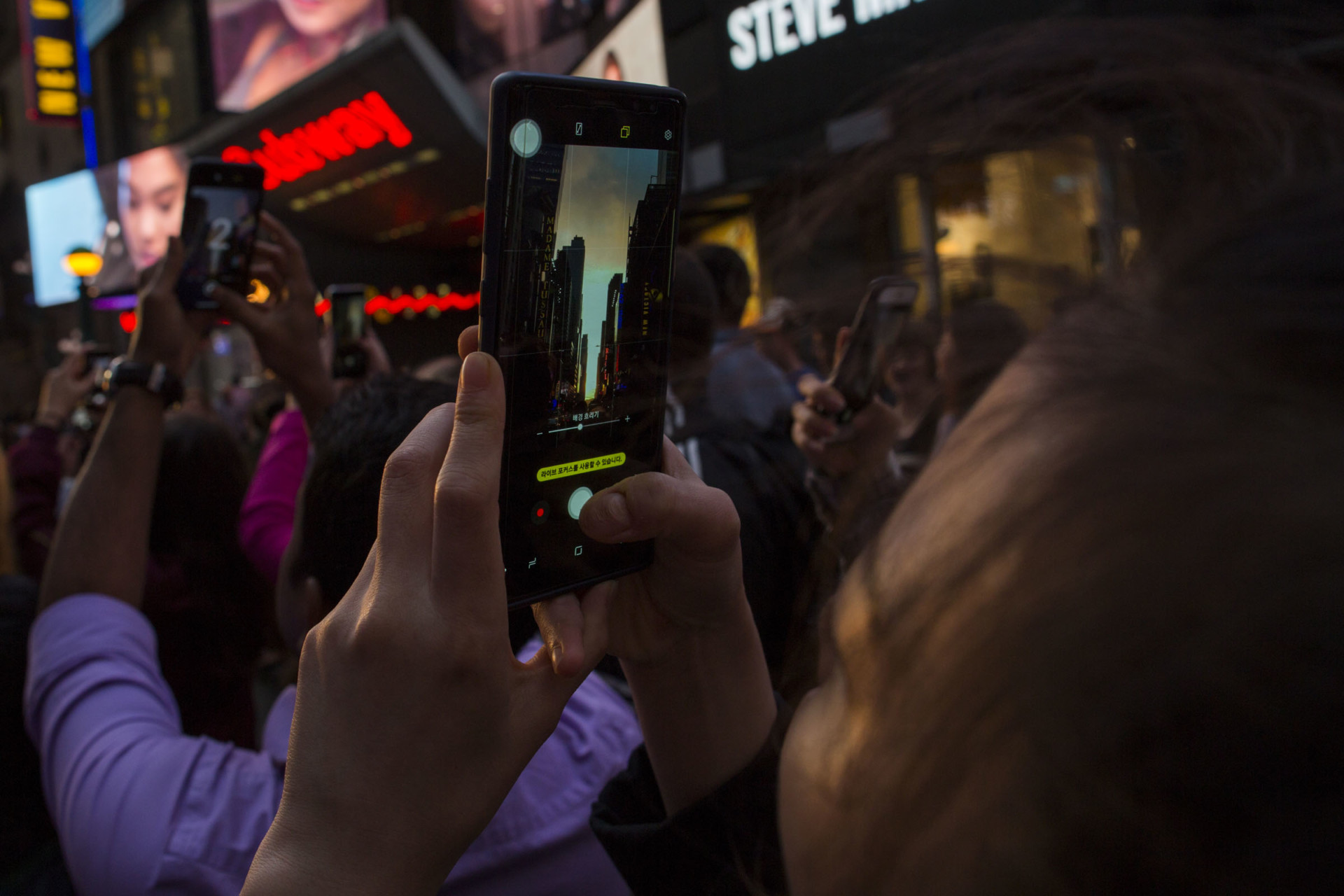
NEW YORK, NY – MAY 30: People take pictures of the phenomenon known as Manhattanhenge on Times Square 42nd Street on May 30, 2018 in New York City. (Eduardo Munoz Alvarez/Getty Images/AFP)

NEW YORK, NY – MAY 30: People take pictures of the phenomenon known as Manhattanhenge on Times Square 42nd Street on May 30, 2018 in New York City. (Eduardo Munoz Alvarez/Getty Images/AFP)

NEW YORK, NY – MAY 30: People take a look of the phenomenon known as Manhattanhenge on Times Square 42nd Street on May 30, 2018 in New York City. (Eduardo Munoz Alvarez/Getty Images/AFP)
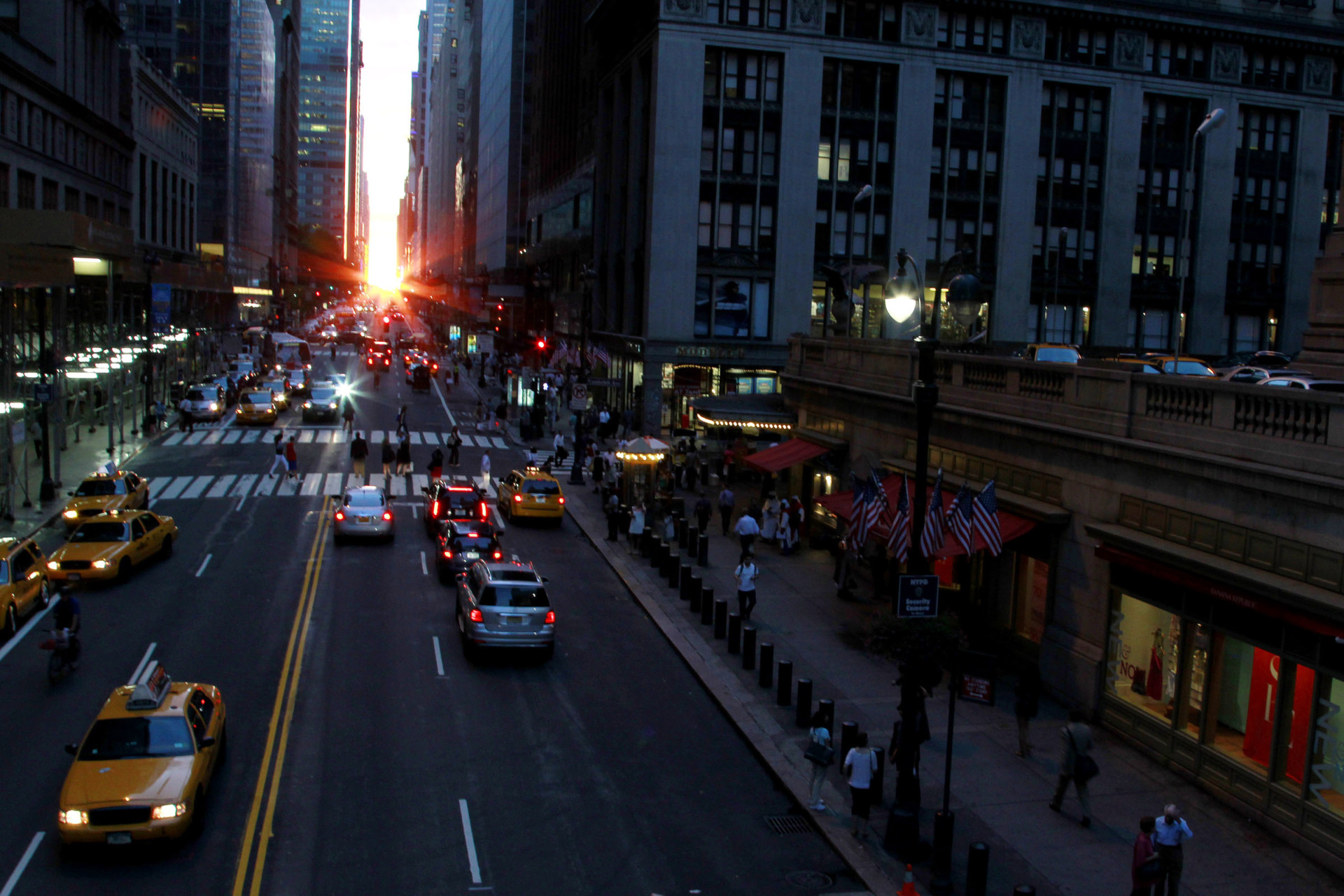
The sun is seen as it sets between Manhattan buildings on 42nd Street during a phenomenon known as “Manhattanhenge,” Wednesday, July 13, 2011 in New York City. (AP Photo/Julio Cortez)
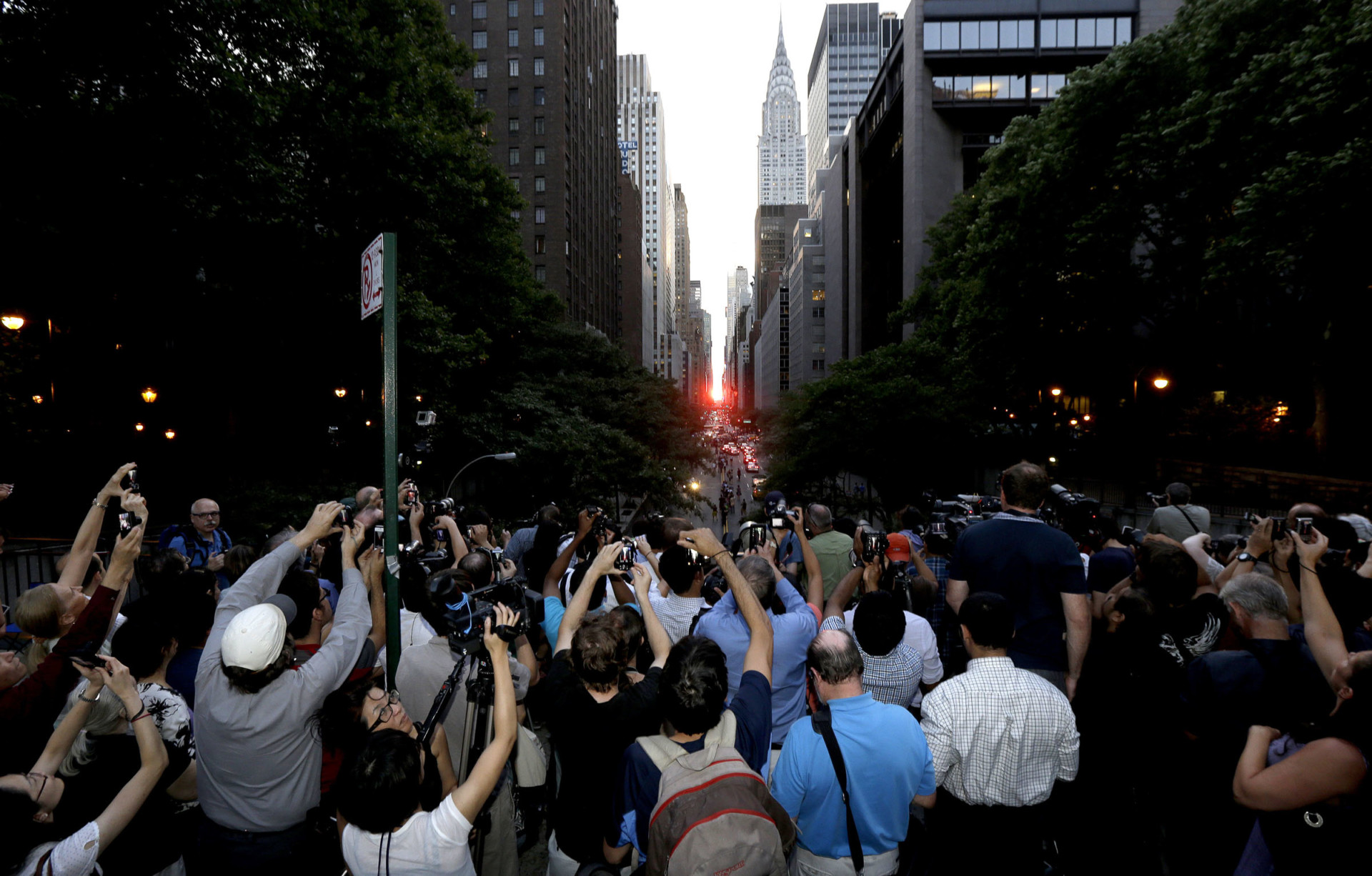
Photographers aim their cameras as the sun sets through the buildings on 42nd Street in New York’s Manhattan borough during a phenomenon known as Manhattanhenge, Wednesday, July 11, 2012. (AP Photo/Julio Cortez)

A woman takes a photo with an iPad as people wait for the sun to set through the middle of the buildings on 42nd Street in New York’s Manhattan borough during a phenomenon known as Manhattanhenge, Wednesday, July 11, 2012. (AP Photo/Julio Cortez)
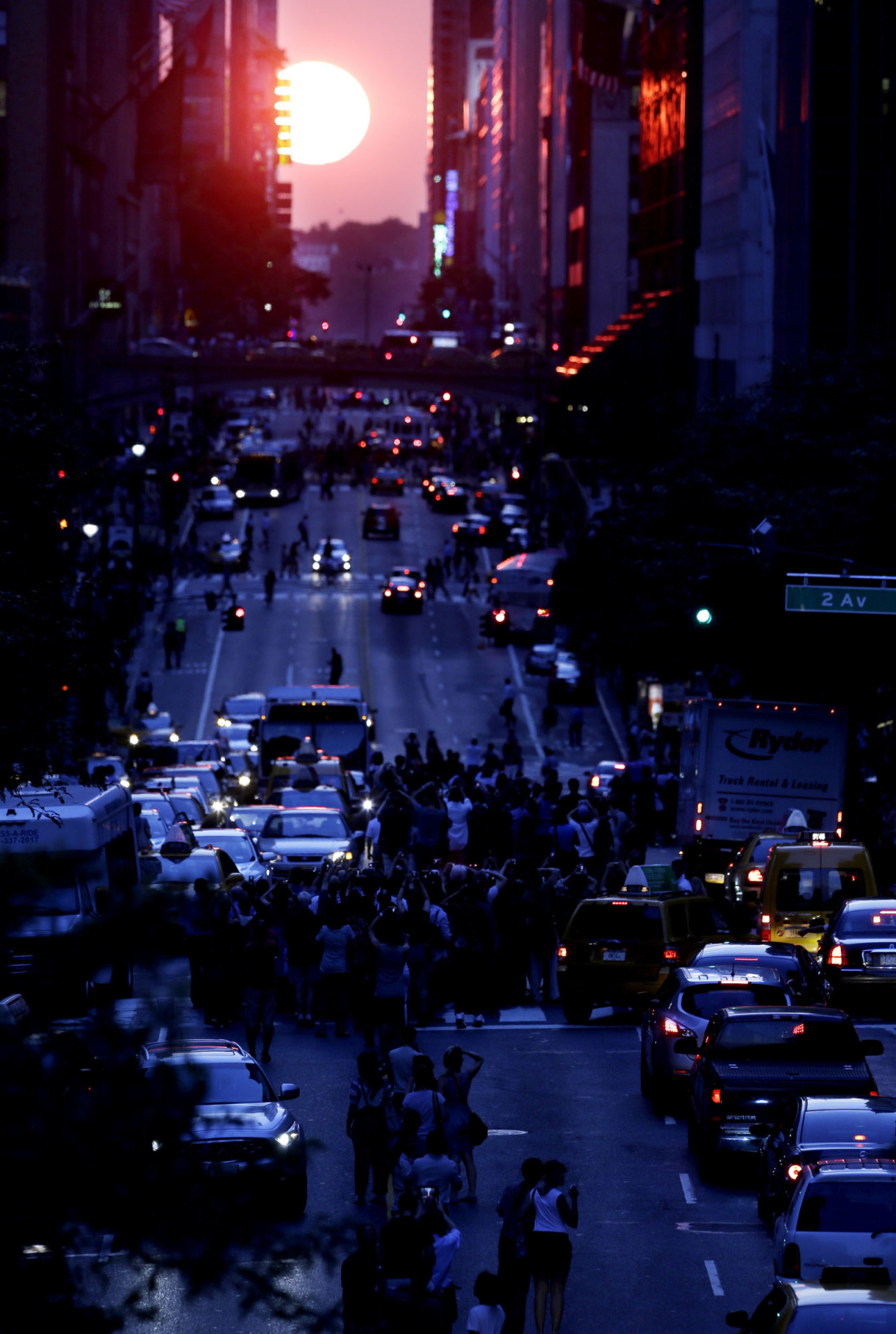
People stand in the middle of 42nd Street in New York’s Manhattan borough as the sun sets through the middle of the buildings during a phenomenon known as Manhattanhenge, Wednesday, July 11, 2012. (AP Photo/Julio Cortez)

The sun sets along 42nd Street in Manhattan during an annual phenomenon known as “Manhattanhenge,” when the sun aligns perfectly with the city’s transit grod, Wednesday, May 29, 2013, in New York. (AP Photo/John Minchillo)
Manhattanhenge on social media
#Manhattanhenge the flame before the fire in the sky pic.twitter.com/oI2hzKJO5B
— DM (@stressdoc_) May 30, 2018
Finally got my very own #Manhattanhenge photo, and it was *totally* worth almost getting hit by half a dozen taxis. pic.twitter.com/wQ8R5COTfr
— Spooky Jane #IStandWithJKRowling 🌹 (@spooky_jane) May 31, 2018
One heck of a sunset tonight in Midtown #Manhattanhenge pic.twitter.com/rHYW3iAMBL
— Cezary Podkul (@Cezary) May 31, 2018
 CGTN America
CGTN America
